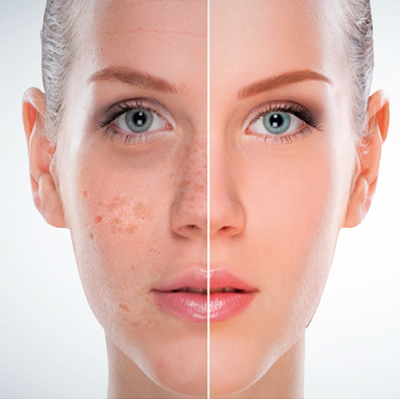Pigmentationm Treatment - Abu Dhabi - Dubai
Pigmentation treatment refers to various medical or cosmetic procedures used to address issues related to skin pigmentation. Skin pigmentation refers to the color of the skin, which is determined by the amount and distribution of melanin, a pigment produced by specialized cells called melanocytes.
There are different types of pigmentation disorders, including hyperpigmentation (excessive pigmentation) and hypopigmentation (insufficient pigmentation). These conditions can occur due to various factors such as sun exposure, hormonal changes, genetics, certain medications, skin injuries, or underlying medical conditions.
Here are some common pigmentation treatments:
- 1. Topical creams: Dermatologists often prescribe topical creams containing ingredients like hydroquinone, retinoids, corticosteroids, or azelaic acid to treat hyperpigmentation. These creams work by inhibiting melanin production, promoting skin cell turnover, or reducing inflammation.
- 2. Chemical peels: Chemical peels involve the application of a chemical solution to the skin, which causes the top layers to peel off, revealing new, less pigmented skin. They can be effective for treating certain types of pigmentation, including sunspots and melasma.
- 3. Laser therapy: Laser treatments use high-energy light beams to target and break down pigmented cells in the skin. Different types of lasers can be used depending on the specific pigmentation issue being treated. Laser therapy is commonly used for conditions like age spots, freckles, birthmarks, and certain types of hyperpigmentation.
- 4. Intense pulsed light (IPL) therapy: IPL uses broad-spectrum light to target and reduce pigmentation irregularities in the skin. It is particularly effective for treating sun damage, age spots, and certain types of hyperpigmentation.
- 5. Microdermabrasion: This procedure involves using a handheld device to exfoliate the outermost layer of the skin, helping to reduce the appearance of pigmentation irregularities. It is less aggressive than chemical peels and can be used for milder pigmentation issues.
- 6. Cryotherapy: Cryotherapy involves the application of extremely cold temperatures to targeted areas of the skin to destroy excess pigmentation. It can be used to treat certain types of pigmented lesions and skin tags.
It's important to note that the choice of treatment depends on the type and severity of the pigmentation issue, as well as individual factors such as skin type and medical history. It's recommended to consult with a dermatologist or a qualified skincare professional who can assess your specific situation and recommend the most appropriate treatment option for you.

